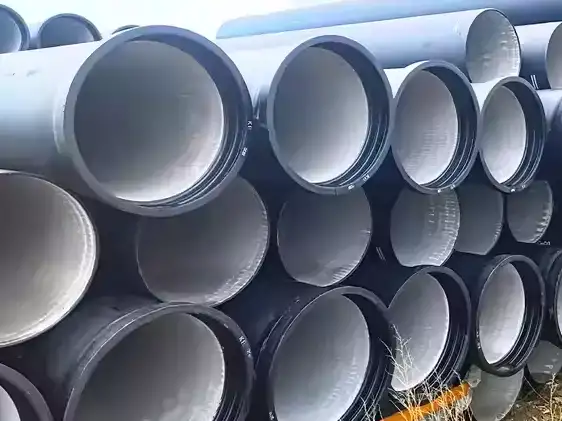Cast iron and ductile iron are both cast iron alloys but possess distinct microstructures—graphite flakes in cast iron versus spheroidal nodules in ductile iron—which result in markedly different mechanical behaviors and applications. While traditional gray cast iron offers excellent compressive strength, vibration damping, and cost-effectiveness, ductile iron provides superior tensile strength, impact resistance, and elongation due to its nodular graphite morphology. These differences drive their use in everything from engine blocks and manhole covers (cast iron) to high-pressure pipes, fittings, and automotive components (ductile iron).

What Is Cast Iron?
Cast iron refers to a family of iron–carbon alloys containing 2.5–4.0% carbon and 1–3% silicon by weight, with the remainder primarily iron. It is traditionally categorized into gray, white, malleable, and spheroidal types—gray cast iron being the most common, featuring flaky graphite structures that impart high compressive strength but low tensile strength and ductility. Its flake-like graphite creates internal stress concentrations under tension, leading to brittle fracture behavior; however, this same structure provides excellent vibration damping and machinability, making it ideal for engine blocks, machine bases, and brake components.
What Is Ductile Iron?
Ductile iron—also known as nodular or spheroidal graphite iron—is a subtype of cast iron in which small amounts of magnesium (and sometimes cerium or calcium) are added to molten iron to induce spheroidal graphite formation. Its typical composition includes 3.4% carbon, 1.8–2.8% silicon, and trace alloying elements like magnesium, manganese, and copper. The nodular graphite microstructure significantly enhances yield strength, tensile strength, and elongation, enabling ductile iron to bend rather than fracture under stress.
Composition & Microstructure Differences
| Characteristic | Cast Iron (Gray) | Ductile Iron (Nodular) |
|---|---|---|
| Carbon Content | 2.5–4.0 wt % | ~3.4 wt % |
| Silicon Content | 1.0–3.0 wt % | 1.8–2.8 wt % |
| Graphite Form | Flakes | Spheroidal nodules |
| Additives for Graphite | None | Mg, Ce, Ca |
| Microstructural Effect | Brittleness, vibration damping | Ductility, toughness |
| Data sources: Wikipedia; Urick Foundry. |
Mechanical Properties Comparison
| Property | Cast Iron (Gray) | Ductile Iron |
|---|---|---|
| Tensile Strength (ksi) | ~50 | 70–100 |
| Yield Strength (ksi) | — | 50–60 |
| Elongation (%) | 0.5–2 | 10–18 |
| Hardness (HB) | 150–300 | 150–250 |
| Impact Resistance | Low | High |
| Sources: Wikipedia comparative table; Milwaukee Valve. |
Typical Applications
-
Cast Iron: Manhole covers, engine blocks, machine-tool bases, cookware, fence posts—applications where compressive strength, damping, and cost are paramount.
-
Ductile Iron: Water and sewer pipes, pump and valve bodies, automotive crankshafts, heavy-duty gears—where tensile strength, impact resistance, and flexibility under load are critical.
Cost & Manufacturing Considerations
-
Cost: Cast iron is more economical due to its simpler chemistry and absence of nodulizing agents, while ductile iron commands a premium for its enhanced performance.
-
Machinability: Gray cast iron machines easily with predictable cutting behavior; ductile iron is slightly tougher but still offers good machinability compared to steels.
-
Foundry Practices: Both are produced via sand casting, but ductile iron requires precise control of nodulizer additions and inoculation practices to achieve the desired nodule count and distribution.
FAQ
Q1: Is ductile iron simply a stronger cast iron?
A1: Not exactly—ductile iron’s strength gains come from its nodular graphite microstructure, which also provides significant ductility, unlike the flaky graphite in gray cast iron.
Q2: Can cast iron and ductile iron parts be welded?
A2: Ductile iron can be welded using specialized electrodes and pre-/post-heat treatments; gray cast iron is more challenging due to its flake graphite, which causes crack-prone welds.
Q3: Which iron alloy offers better corrosion resistance?
A3: Ductile iron typically provides marginally better corrosion resistance in buried applications due to its denser matrix and lower permeability .
Q4: How do I identify cast vs. ductile iron in the field?
A4: A simple “ring” test helps—ductile iron rings with a clear tone similar to steel, whereas gray cast iron produces a dull thud when struck.
Q5: Are ductile iron and nodular iron the same?
A5: Yes—the terms “ductile iron,” “nodular iron,” and “spheroidal graphite iron” are interchangeable, all referring to cast irons with spherical graphite inclusions.
